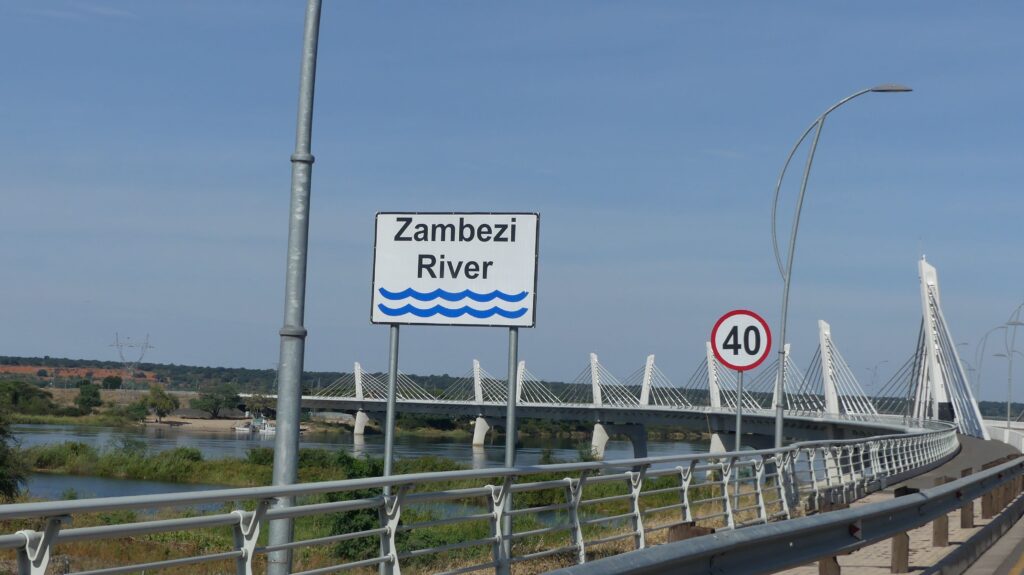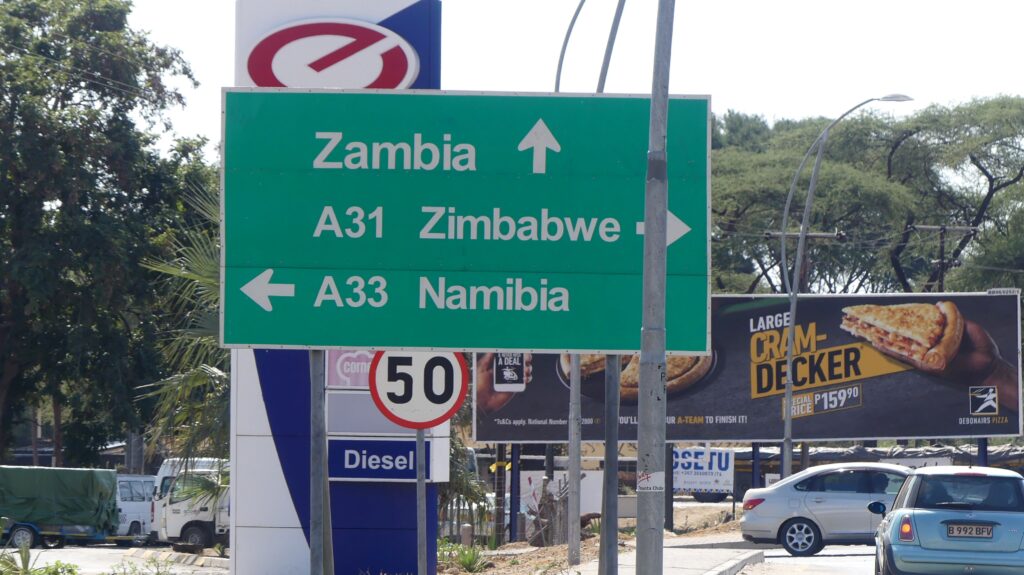An der Grenze nach Sambia (problemlos, wieder unter 30 Minuten) enttäuschten wir die schlitzohrigen Geldwechsler und freundlichen Grenz-Bürokratie-Beratungs-Helfer – wir lehnten jegliche Hilfen ab. Hier, bei Kazungula, in der Mitte des Sambesi, treffen sich die Grenzen von Botswana, Namibia, Sambia und Simbabwe.
Zeit für ein paar Fakten zu Botswana: Etwas zwei Millionen Menschen leben in Botswana, mehr als drei Viertel davon in einem schmalen Streifen im Osten des Landes, etwa in der Hauptstadt Gaborone. Insgesamt sind das weniger Menschen als in Paris – auf einem Territorium, das etwas größer ist als Frankreich. Wie überall in Afrika, ist auch Botswana ein junges Land: Ein Drittel der Bevölkerung ist jünger als 15 und nur 4 % sind über 65 Jahre alt. Nicht minder beeindruckend: Die Elefantenpopulation ist mit rund 130.000 Exemplaren die größte Afrikas.
Die Region des heutigen Botswana wurde 1883 als Betchuanaland ins Britische Empire integriert, angeblich, um die Bevölkerung vor den Buren zu schützen. Als Botswana 1966 dann unabhängig von Großbritannien wurde, gehörte es zu den ärmsten Ländern Afrikas. Das Land hatte nichts, was in der Kolonialzeit wirklich interessant gewesen wäre. Und so gibt es im Vergleich zu den Nachbarstaaten heute nur wenige Weiße.
Inzwischen ist Botswana einer der wirtschaftlich stabileren und erfolgreicheren Staaten in Afrika. Ein Grund ist, dass im Jahr nach der Unabhängigkeit (schöner Zufall) reichhaltige Diamantenminen entdeckt wurden. Der zweite ist eine gute politische Führung, denn die Einnahmen aus der Diamantenförderung wurden auch tatsächlich in die Entwicklung des Landes investiert, das Bildungs- und Gesundheitswesen stark ausgebaut und Botswana gemäß dem „Demokratieindex“ zum demokratischsten Land Afrikas entwickelt. Und das Umfeld ist momentan gut für Botswanas Diamanten und deren Export im Wert von ca. 3,5 Mrd USD: Im Gegensatz zu den Steinen der beiden anderen großen Produzenten, Russland und Kongo, sind Diamanten aus Botswana ethisch einwandfrei.


At the border to Zambia we disappointed the money changers and border bureaucracy advisors that we did not need their help. Here, at Kazungula, in the middle of the Zambezi, the borders of Botswana, Namibia, Zambia and Zimbabwe meet.
Time for a few facts about Botswana: About two million people live in Botswana. All in all, that is fewer people than in Paris – on a territory that is slightly larger than France. Like everywhere else in Africa, Botswana is a young country: one third of the population is younger than 15 and only 4 % are over 65. Talsking about population: the elephant population is the largest in Africa with around 130,000 specimens.
The region of today’s Botswana was integrated into the British Empire in 1883 as Betchuanaland, allegedly to protect the population from the Boers. When Botswana became independent from Great Britain in 1966, it was one of the poorest countries in Africa. No wonder no one was really interested in the country during the colonial period, and so there are only a few whites today compared to the neighbouring countries.
Meanwhile, Botswana is one of the more economically stable and successful countries in Africa. One reason is that rich diamond mines were discovered the year after independence. The second is good political leadership, because the revenues from diamond mining were actually invested in the country’s development, education and health care were greatly expanded and Botswana became the most democratic country in Africa according to the „Democracy Index“. And the environment is currently good for Botswana’s diamonds and exports worth about USD 3.5 billion: unlike the stones from the other two big producers, Russia and Congo, diamonds from Botswana are ethically sound.
Schreibe einen Kommentar